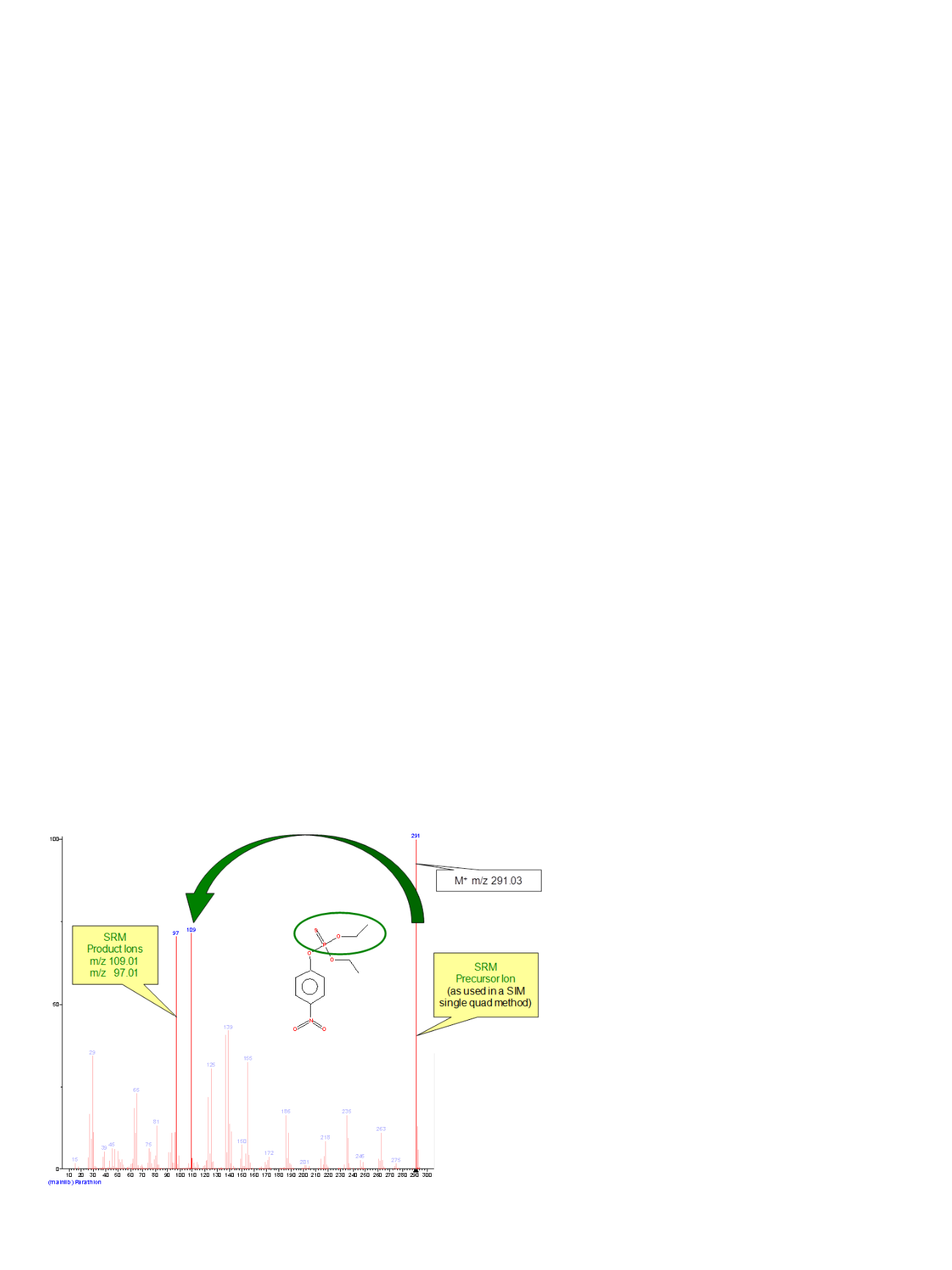
3
“only,” working as a mass selective detector. The new
capabilities have revolutionized all structure elucidation
work at a time before quantitative triple quadrupole
applications appeared.
Today, standard triple quadrupole analyzers still deliver
selectivity through the same structure related mechanism.
Advanced systems, such as the TSQ Quantum XLS Ultra,
deliver selectivity via two mechanisms: structure-selective
detection and enhanced mass resolution capabilities.
Structure-Selective Detection
The chemical composition and structure of a molecule
determines the specific pathways of ion source fragmenta-
tion during ionization. During this process, energy is
transferred to a compound, and it is distributed through-
out the molecule and eventually breaks chemical bonds.
This results in a spectrum of different mass fragments and
relative intensities. A similar mechanism applies to
collision induced dissociation (CID) in the collision cell
(Q2) of a triple quadrupole analyzer.
This can be best illustrated having a closer look at a
regular EI spectrum, for instance from the well known
pesticide parathion. The parathion EI spectrum in Figure
4 shows the intense molecular ion as the base peak
(nominal mass 291
m/z
and accurate mass 291.03
m/z
)
and the dissociation of the molecular ion structure into a
number of lower mass fragments, all of them contributing
to a fingerprint of the given structure. For a low level SIM
detection, the intense molecular ion 291
m/z
is the signal
of choice. When performing SRM on a triple quadrupole
instrument the same 291
m/z
is targeted as the precursor
ion. After CID fragmentation in the collision cell,
structurally selective product ions are formed and
monitored using Q3. In the case of parathion, the product
ions 109 and 97
m/z
(which also occur during EI source
ionization – Figure 4) are monitored. These product ions
are formed in consistent ratios to each other.
Only structures eluting at the retention time of parathion
with a parent ion of 291
m/z
are expected to give a signal
at the product ions 109 and 97
m/z
. This filters out most
of the unspecific background interference at 291
m/z
,
which limits the SIM detection in a single quadrupole
instrument.
Adding Mass Selectivity with Enhanced Mass
Resolution
In some matrices, the high structural selectivity of a triple
quad analyzer can be impaired by a compromised
selection of the precursor ion at Q1. The unique capabil-
ity of the TSQ Quantum XLS Ultra is that it allows a
much more selective isolation of a target pre-cursor ion at
the first stage of MS (Q1). This allows further discrimina-
tion against intense matrix ions that appear at nominal
precursor masses (isobaric interferences). As a general
rule, in order to achieve this, precursor masses need to be
specified more accurately to the instrument within 1 or 2
decimal places as well as the instrument mass resolution
on Q1 being set to
≤
0.2 Da FWHM. This is described as
an “ultra-selective” mode for a quadrupole analyzer.
Resolution settings can be increased for Q3 also for more
selectivity in product ion experiments, although for SRM
Q1, resolution is a more critical parameter.
Enhanced mass resolution with quadrupoles can be
achieved by using precision machined hyperbolic quadru-
poles of special length. Ultra-selective quadrupole mass
resolution for SRM detection (U-SRM) is a novel acquisi-
tion mode for GC-MS/MS instruments. This mode allows
the combination of increased mass resolution selectivity
and structural selectivity when targeting compounds in
complex matrix. The TSQ Quantum XLS Ultra allows
this mode by incorporating extra long hyperbolic
quadrupole rods (190 mm), with a wide internal radius of
6 mm, as shown in Figure 2. While the long rods deliver
excellent mass peak form and resolution, the wide 6 mm
radius accepts an increased number of ions from the
source for increased ion transmission and sensitivity in the
ultra selective SRM mode (U-SRM).
Figure. 4: EI mass spectrum of parathion simulating SRM precursor and product ions for
MS/MS (NIST library)


